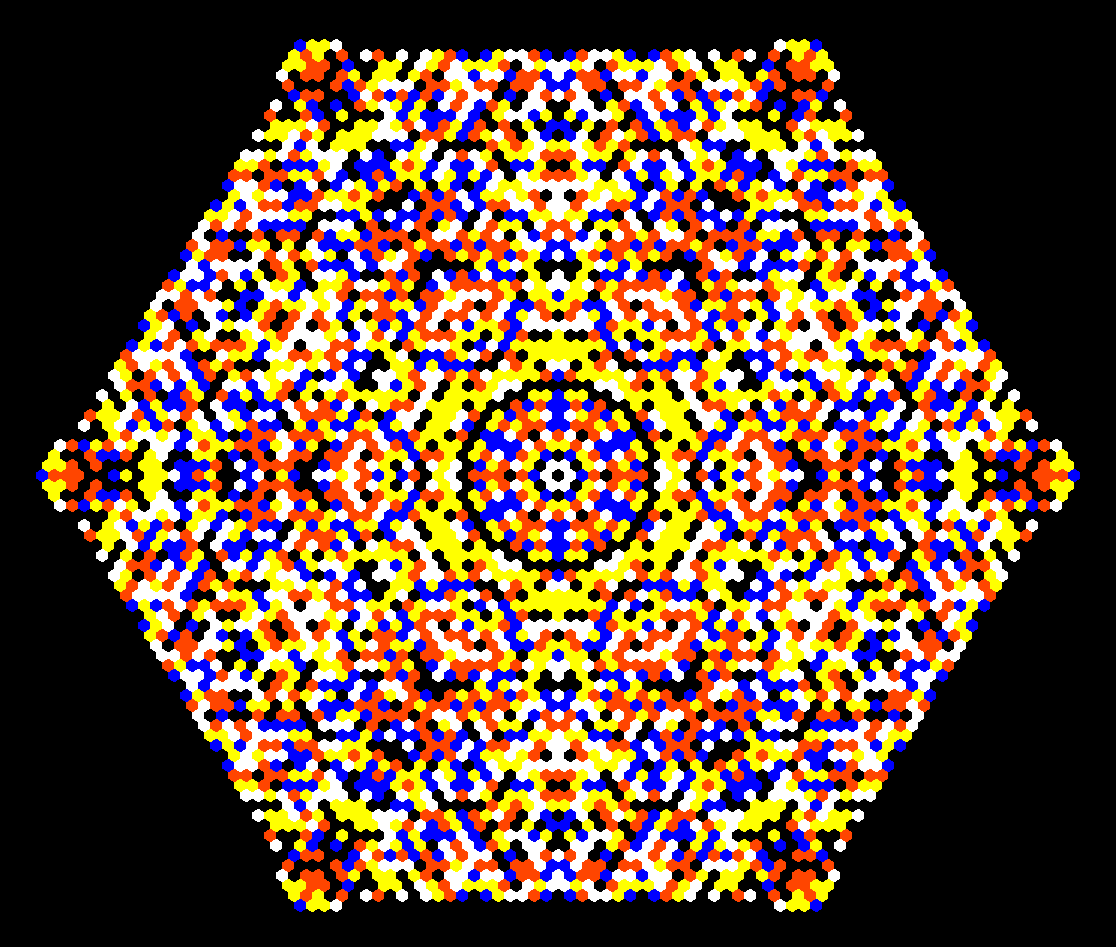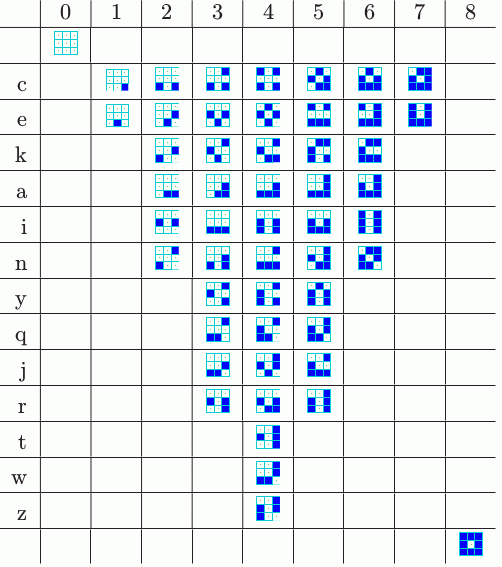

| Discrete Dynamics Lab |
Update January 2018ddlabz06 is documented in an updated hyperref PDF ExploringDiscreteDynamics-updateJan2018.pdf which can be downloaded HERE. This is an updated version of Exploring Discrete Dynamics, Second Edition (EDD2) (2016) published by Luniver Press, a 8x10 inch 577 page paperback with color figures, which can be purchased at Amazon-UK, Amazon-USA, and other online book sellers.
January 2018 updates (on the
March 2017 release)
include the following new features, as well as improvements and bug fixes.
|

space-time pattern from a singleton seed, on a hexagonal lattice 100x100.
xxxxxxxxxxxxxxxxxxxxxxxxxxxxxxxxxx | DDLab has been updated at regular intervals since its release in 1995. Its precursor was the Atlas software included on diskette inside the back cover of "The Global Dynamics of Cellular Automata" 1992. For a list and download of this and older versions click here.
(EDD2ndEd-update) is the latest documentation
March 2017 |
 DDLab’s implementation of Hensel’s matrix
| EDD#16.10.3 Hensel notation for Golly (for 2d binary v2k9 (3×3) CA only) Binary 2d isotropic rules with a Moore neighborhood The figure on the left shows DDLab’s implementation of Hensel’s matrix, from which the ascii notation is derived. Each neighborhood pattern is the prototype of an isotropic group, where columns show the number of live cells (excluding the center), and lower case letters mark rows according to an appearance classification. These prototypes are equivalent to Hensel’s, but sometimes differ because in DDLab the lowest decimal equivalent is taken as the prototype. These decimal equivalents result from the sum of live values in the neighborhood calculated thus:
DDLab translates its own (isotropic) rcode encoding (EDD#16.16) into two such matrices, one for birth and one for survival. With some further refinements, an ascii string is constructed from these matrices defining the rule, which may form part of Golly’s *.rle file. For example, the Golly *.rle script,
x = 92, y = 47, rule = B2cei3eq4qt5cy6n/S12an3acejy4ijn5jy6-ek8 includes the rule’s Hensel string (top) and the initial state (below). The rule can be saved/loaded in DDlab as a *.hen file (enter H at >iso-I/H/* in EDD#16.4.1). The initial state “run-length” encoding can be saved/loaded in DDLab as a *.gly file (enter G at Golly-G in the seed prompt in EDD# 21.1, 21.11).
The example is for the Sayab rule
and its glider-gun.
|
Return to the
Discrete Dynamics Lab home page.
Last modified: Jan 2018